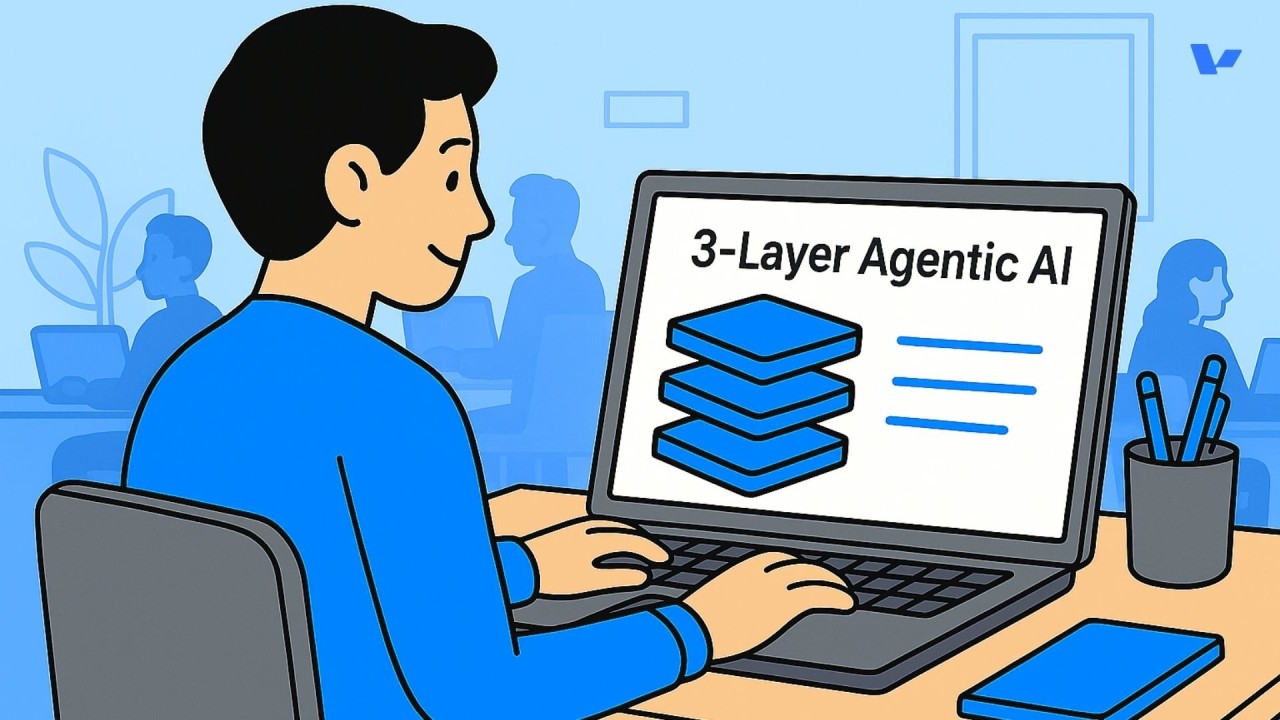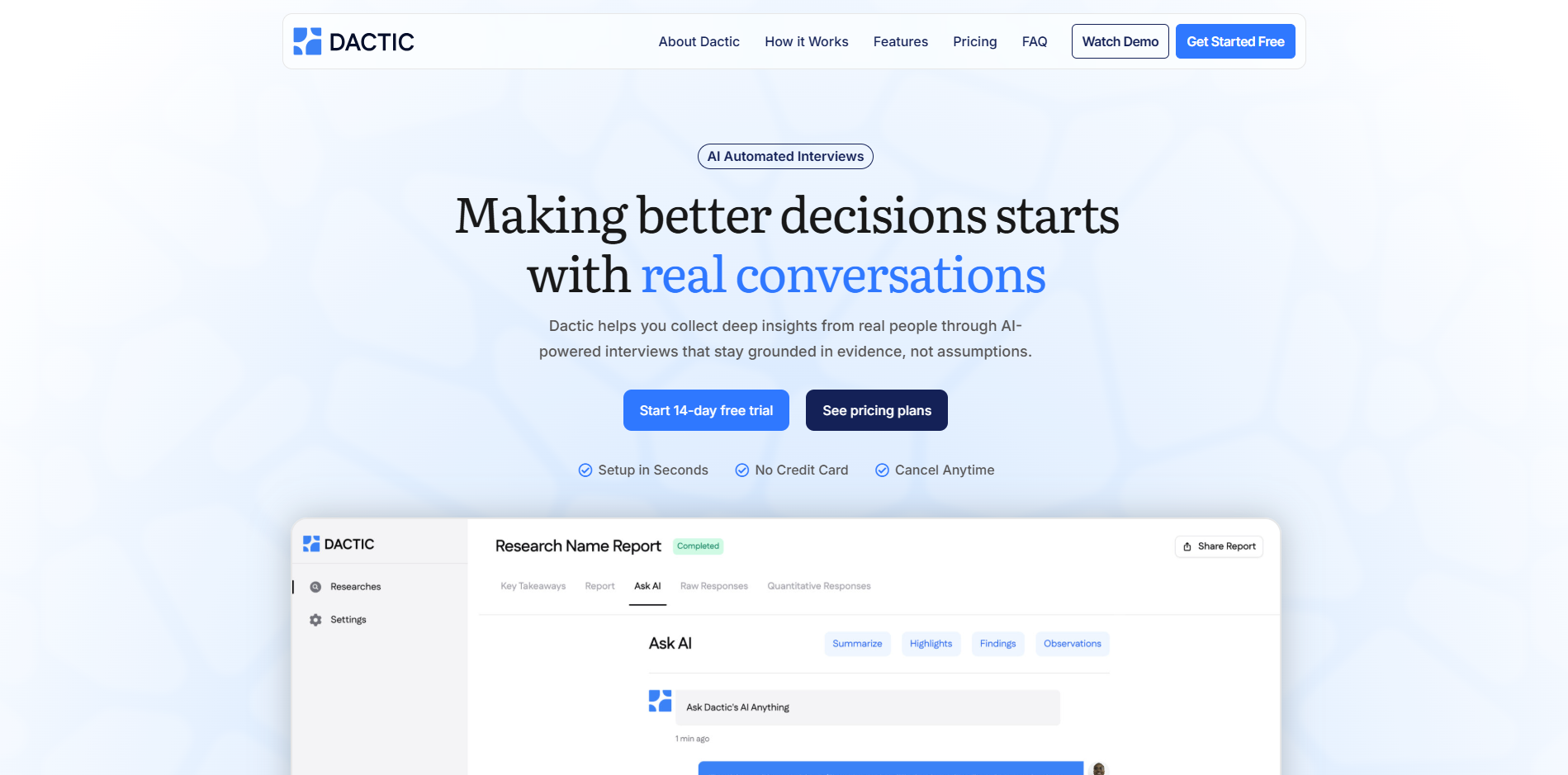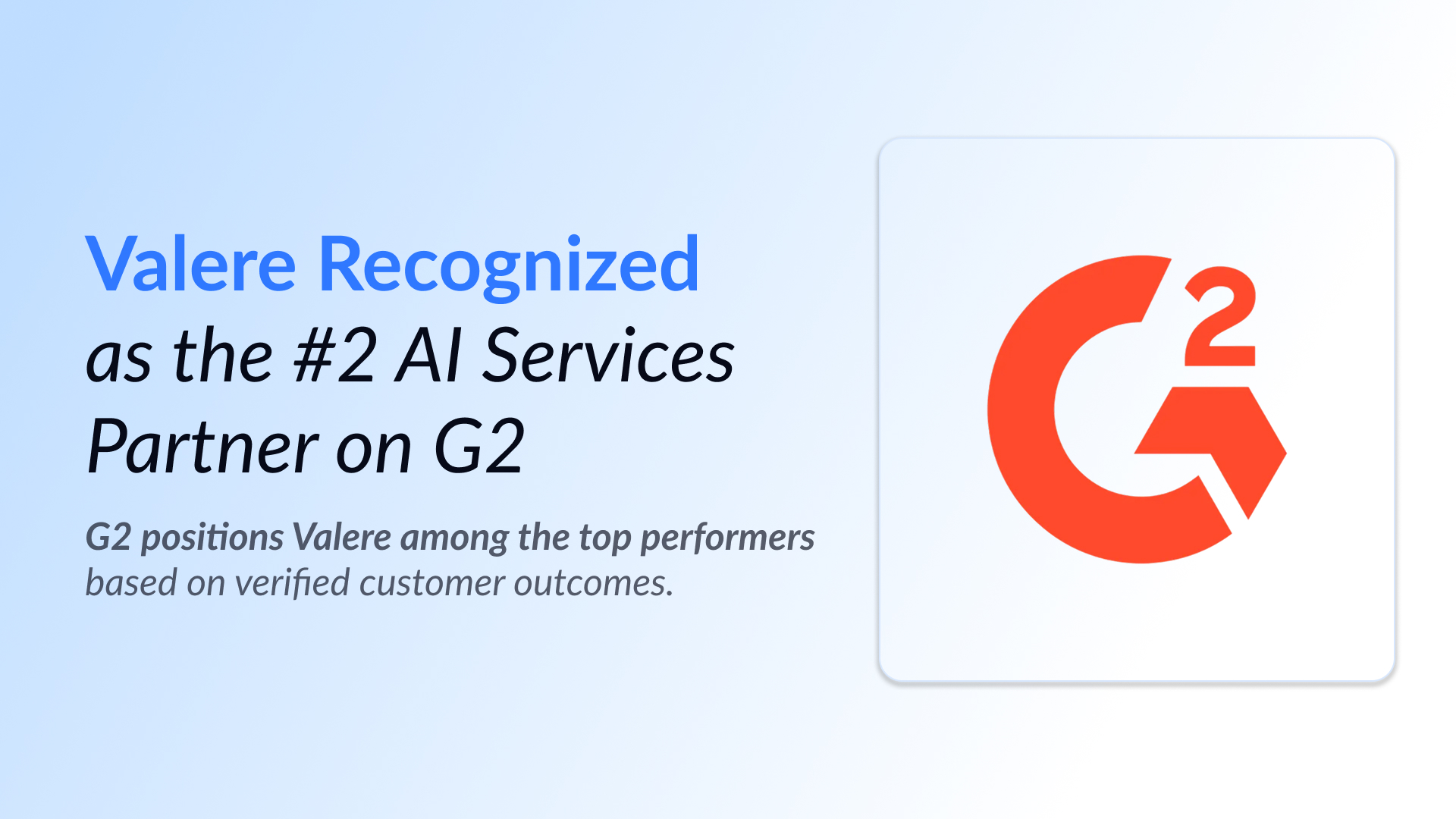By: Alexander Turgeon, President of Valere
Your smartphone remembers your face. Netflix knows your terrible reality TV addiction. But can AI agents remember last week’s conversation while getting smarter from their mistakes?
The difference separates glorified chatbots from AI that actually evolves.
Most AI systems today suffer from digital amnesia. They’ll give you brilliant responses to current questions. Then promptly forget everything when you close the chat window. It’s like talking to someone with five-minute memory blackouts.
Agentic AI flips this script completely. These systems remember, adapt, and build on past interactions. The magic happens through sophisticated memory architecture that mirrors human cognition.
Why Most AI Has Memory Problems
Traditional AI models work with “context windows”. Think of extremely short attention spans. Once that window fills up, early information gets pushed out. Like passengers getting shoved off a crowded subway car.
This creates problems for complex tasks. Imagine managing a multi-week project where your assistant forgets the goals every few hours. You’d spend more time explaining context than getting actual work done.
Agentic AI solves this through persistent memory systems. They function across three distinct layers. Each layer handles different information types. Together, they create comprehensive systems that adapt and improve over time.
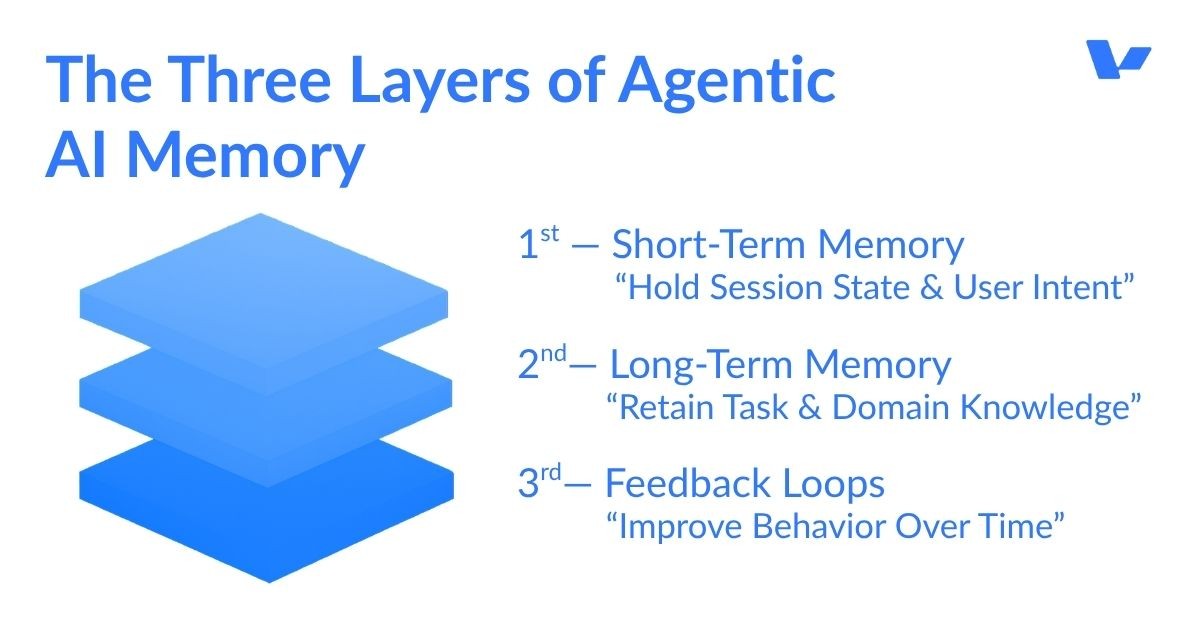
Layer One: Short-Term Memory – Your AI’s Mental Scratch Pad
Short-term memory works like your mental notepad when juggling multiple tasks. It holds immediate context, meaning current conversations, active goals, working data.
This layer faces one major challenge: context overflow. When information exceeds the agent’s token limit, crucial details vanish. It’s like trying to remember a grocery list that keeps growing while your brain stays the same size.
The Smart Solution: Summarization Magic
Advanced agents condense information intelligently. They extract key points from lengthy documents. They maintain essential context. They discard irrelevant details. Think executive assistant who knows exactly what to highlight in 50-page reports.
Key Insight: When designing AI workflows, build in summarization checkpoints. Don’t let your agent drown in information overload.
Layer Two: Long-Term Memory – Where Knowledge Lives Forever
Long-term memory stores knowledge that persists across tasks, workflows, even months. This isn’t just bigger storage, it’s sophisticated systems with three distinct memory types.
Episodic Memory: The AI’s Digital Diary
Episodic memory stores specific events and interactions. Your agent remembers that workflow from last Tuesday. The particular user request it handled. What happened when things went sideways.
This proves invaluable for complex, multi-step processes. Agents reference previous attempts. They understand what worked. They avoid repeating mistakes.
Semantic Memory: The Knowledge Vault
Semantic memory houses factual information. Structured database data. Insights from documents. General knowledge accumulated over time. Customer preferences, market data, technical specifications.
The advantage? This knowledge stays accessible regardless of acquisition timing. Your agent builds comprehensive domain understanding over time.
Procedural Memory: The Skill Set
Procedural memory stores “how-to” knowledge. API usage steps. Software interaction methods. Complex workflow execution. Less about facts. More about action sequences.
This enables agents to become genuinely skilled at assigned tasks. Building expertise that compounds over time.
Storage Architecture: Right Tools for Each Job
Different memory types need different storage solutions:
- Relational databases for structured facts and relationships NoSQL systems for flexible, unstructured information
- Graph databases for complex relationship mapping Vector databases for semantic similarity searches
Vector databases deserve special attention. They enable meaning-based searches rather than keyword matching, making knowledge retrieval far more sophisticated.
The Retrieval Challenge
Biggest hurdle with long-term storage? Finding needles in ever-growing haystacks. Poor organization renders vast knowledge bases useless.
Pro Tip: Invest heavily in metadata, tagging systems, and automated categorization. Future you will appreciate quick information retrieval.
Layer Three: Feedback Loops – The Intelligence Engine
Feedback loops represent the most dynamic memory aspect. This layer processes user corrections, performance metrics, results analysis. Driving continuous improvement.
Agents don’t just store feedback. They analyze patterns, identify improvement opportunities, and adjust behavior accordingly. Creating genuine intelligence rather than simple information accumulation.
Feedback Processing Types:
- Direct corrections from users pointing out errors
- Performance metrics against predefined goals
- Results analysis comparing intended vs. actual outcomes
- Pattern recognition across multiple interactions
Worst-case scenario? Agents that extract wrong lessons from feedback. Poor feedback processing sends AI down completely wrong paths.
Smart Strategy: Establish clear, measurable success metrics upfront. Build robust processes for capturing, analyzing, and applying feedback correctly. Measure what actually matters.
Implementation Reality: Where Theory Meets Practice
Understanding memory architecture is step one. Actually building effective agents? That’s where most projects face the music.
Finding Your Sweet Spot
Most overlooked first step: identifying where agentic AI actually makes sense. You need three overlapping elements:
- High impact for your business or process
- Technical feasibility with current AI capabilities
- Realistic implementation effort within timeline and budget
Don’t build agents for low-impact tasks. Don’t attempt impossible challenges requiring deep human creativity. Find that sweet spot where agents genuinely move needles.
Multi-Agent Architecture: The Team Approach
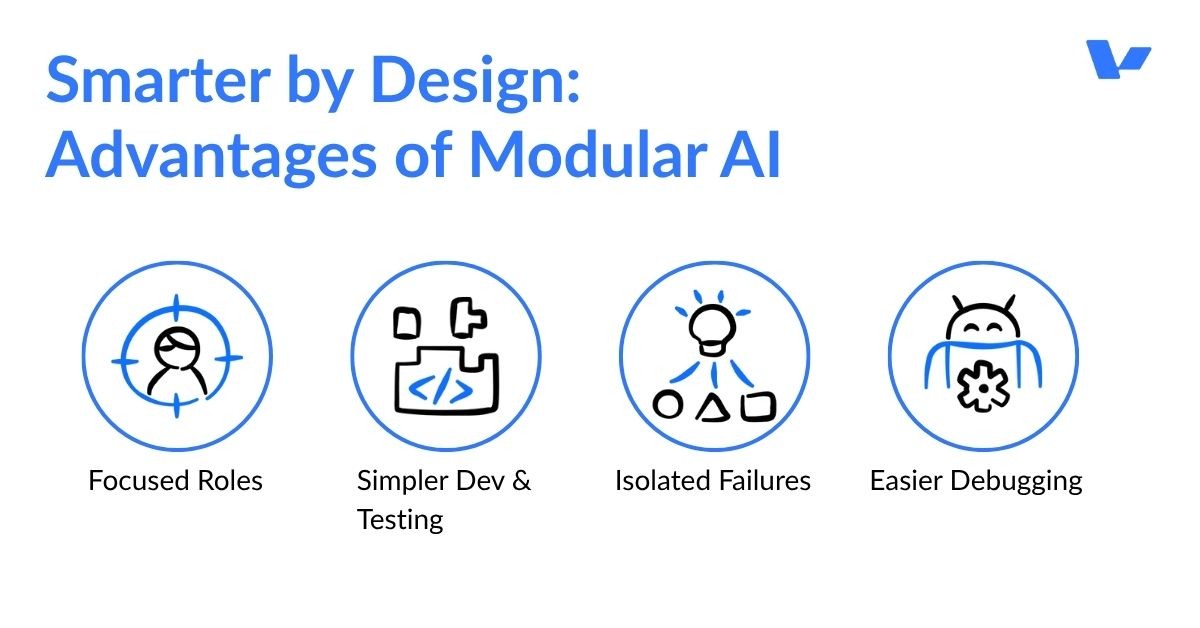
Smart implementations use manager agents coordinating specialized sub-agents. Rather than building massive agents trying to handle everything.
Think well-organized teams. Managers get requests, understand goals, delegate specific tasks to specialists. CRM agents pull customer data. Web search agents find recent company news. Summarization agents pull everything together.
Key Advantages:
- Each sub-agent has narrow, manageable focus
- Easier to build, test, maintain individual components
- Failures in one area don’t crash entire systems
- Debugging becomes far more straightforward
The AGENT Framework: Your Implementation Roadmap
Successful agent building follows structured methodology:
A – Agent Identity: Define purpose, scope, boundaries clearly. What will it do? Equally important—what won’t it do?
G – Gear and Brain: Choose right AI models, identify necessary tools and APIs, curate knowledge sources.
E – Execution and Workflow: Design step-by-step processes, standardize inputs and outputs, define triggers.
N – Navigation and Rules: Establish safety protocols, error handling procedures, decision logging for transparency.
T – Testing and Trust: Implement real-world simulations, monitoring systems, feedback loops for continuous improvement.
Battle-Tested Wisdom: Insights from the Trenches
Most valuable insights come from people who’ve actually built these systems and hit inevitable roadblocks:
Only Automate Proven Processes: Don’t try automating chaos. Get workflows right manually first, then bring agents in.
Design for Human Collaboration: Agents work best augmenting humans rather than replacing them entirely. Keep humans in loops for complex judgment calls.
Plan for Failure: Your agent will fail sometimes. Build solid error handling and graceful recovery systems. Have clear escalation paths to humans when things go wrong.
Build Decision Trails: Log reasoning behind every action. This proves vital for debugging, audits, and building user trust.
Start Small, Then Scale: Get something working first. Prove value, extract insights from real usage, then expand gradually.
Deployment Exceeds Building Complexity: People consistently underestimate effort required for integration, security, monitoring, and ongoing management. Plan accordingly.
The Bigger Picture: What This Means for You
Whether you’re building agents yourself or working alongside them, understanding these memory systems helps you see past hype. Real agentic AI requires sophisticated engineering, thoughtful design, and disciplined implementation.
Successful agents will be those that can genuinely adapt while remaining reliable and trustworthy. That’s harder than most people realize.
Memory architecture isn’t just technical detail. It separates truly useful AI agents from clever demos that break down in real-world conditions.
The Autonomy Question: Something Worth Pondering
If building successful agents requires accepting they’ll sometimes fail, planning for ongoing refinement, keeping humans involved for judgment calls—is full autonomy the right goal?
Maybe the future isn’t about completely autonomous AI. Perhaps it’s about AI smart enough to know when it needs help. The most valuable agents might be those that can adapt continuously while staying grounded enough to recognize their limitations.
That balance between capability and humility could define the next generation of AI systems. The ones that acknowledge what they don’t know tend to be most trustworthy in the long run.
As AI agents become more common in your work and daily life, this question becomes increasingly relevant: Where exactly should that line be drawn between autonomous capability and human oversight?
The answer might determine not just how effective these systems become, but how much we can actually trust them with things that matter most.
The Memory Revolution Is Here
AI agents with sophisticated memory systems represent a fundamental shift. They’re moving beyond simple question-and-answer interactions toward genuine digital colleagues that remember context, build expertise, and improve over time.
The organizations that master these memory architectures first will have significant advantages. Their AI won’t just be smarter, it’ll be truly intelligent in ways that compound over time.
That’s the real promise of agentic AI: not just better responses, but systems that genuinely evolve alongside the humans they serve.
Ready to unlock the full potential of AI Agents in your enterprise in 2025? Contact us to learn more about how Valere can propel you on your AI journey.
About Valere: Valere is an award-winning technology innovation & software development company, utilizing emerging technology in Machine Learning (ML) and Artificial Intelligence (AI) to enable medium to large enterprises to execute, launch, and scale their vision into something meaningful.
About Alex: Alex Turgeon is President of Valere, a leading AI transformation and software development firm helping enterprises navigate the shift to agent-driven operations. Connect with Alex to discuss how your organization can begin its transformation to the agent era.
